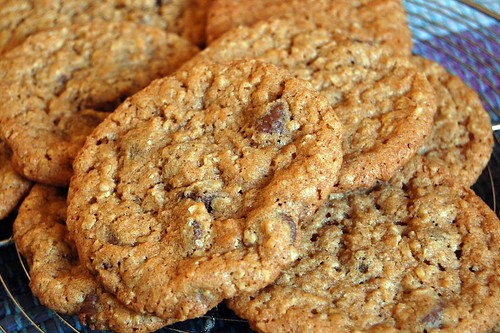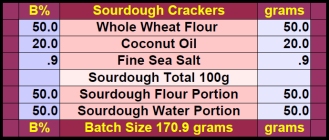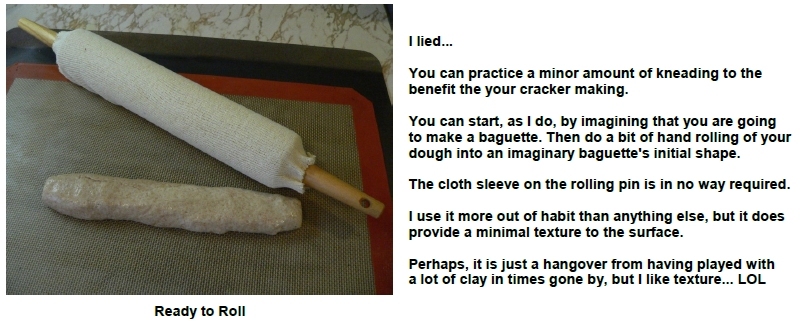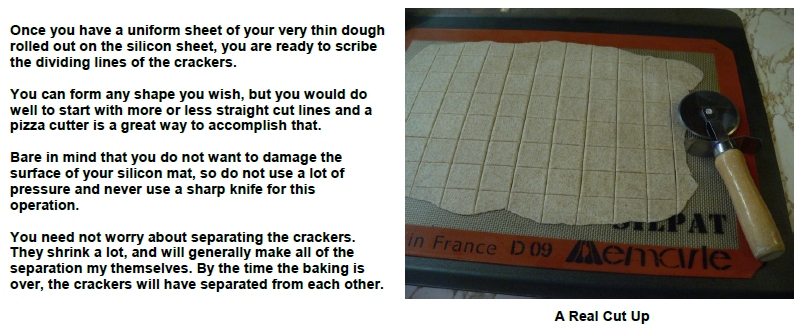Before I went and watched my boss's dogs and house while he was away on vacation, I managed to bake a few loaves of bread that I did not get a chance to blog about.
The first loaf was a 100% whole wheat mash bread from Reinhart's Whole Grain Breads.
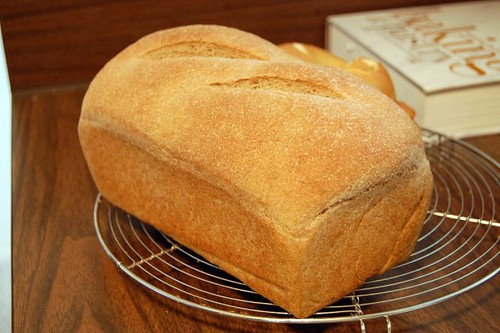
I was rather curious about this loaf after having made a few rye breads using Hamelman's hot rye soaker technique. What I remembered from those loaves is the mash imparted a slightly sweet taste to the final loaf as if there was a touch of sugar or honey. Bwraith blogged about this bread as well seen here; Whole Wheat Mash Bread. There is no need for me to rewrite the recipe since it is available on Bwraith's blog, which he kindly supplied in his post.
I only made two changes to the loaf. I used a whole wheat starter in place of the biga, as Reinhart provides as an alternative leavening agent. Also I left out the suggested sweetener in the recipe for two reasons; I felt many of Reinhart's recipes from WGB to be far too sweet to begin with, and second because I wanted to see the potential of the mash. To my surprise I found the end loaf to have a full 'whole grain' taste which I desired, a slightly sour taste, but only a slightly sweet taste too. I half-expected the wheat mash to match the rye mashes I have dealt with before, but to my surprise it couldn't compare. Though this loaf was still very tasty. I imagine the sweetness I was looking for has to do with the more ferment-able sugars found in rye.
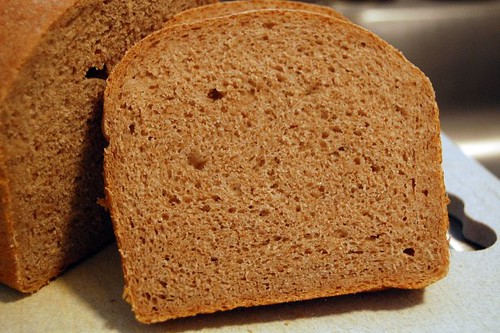
The next loaf of bread I baked was from The Culinary Institute of America's Baking and Pastry book.

It was a simple whole wheat sourdough. The end product though after an over night retardation provided a very, very tasty loaf in my opinion that certainly surpassed what I was expecting. The formula and procedure follows;
Whole Wheat levain
Ingredients Bakers % Weight
Bread Flour (Sir galahad) 50% 5.4 oz
Whole Wheat Flour 50% 5.4 oz
Water (DDT 76) 75% 8.1 fl oz
100% Starter * 40% 4.32 oz
Salt (Grey Sea Salt) 2.7% .3 oz
*Starter used was a 50/50 of Sir Galahad and Fresh Milled 100% Whole wheat flour. As with the whole wheat flour used in the loaf, it too was fresh milled.
Method
1. Combine the flours, water, sourdough and mix on low speed for about 4 minutes. Let the dough rest for 20 minutes. Add the salt and mix 1 minute on low and then 2 minutes on medium. Aim for a improved stage of gluten development. The dough should be slightly soft but elastic.
2. Bulk ferment the dough until nearly doubled in volume, about 1 hour. Though it took me about 3 hours in a cold apartment. Fold gently and ferment for another hour. Fold again. Ferment for another 20 minutes.
3. Preshape the dough into a round and let rest for 15 - 20 minutes.
4. Gently shape the loaf into a batard or round when sufficiently relaxed.
5. Place in a banneton lightly floured and covered with plastic overnight in the fridge to have a slow final rise.
6. When the dough has risen, or the next morning, preheat your oven with your dutch oven or cc, or latest crazy steaming method to 470F.
7. When preheated, remove bread from retarder, load into your oven, score and cook covered (or steamed) for twenty minutes. After twenty minutes remove steaming apparatus, bake in a dry oven for 17 minutes, or until loaf registers 200F, sounds hollow when thumped or looks nice and done to you!
8. Cool completely, slice and enjoy.
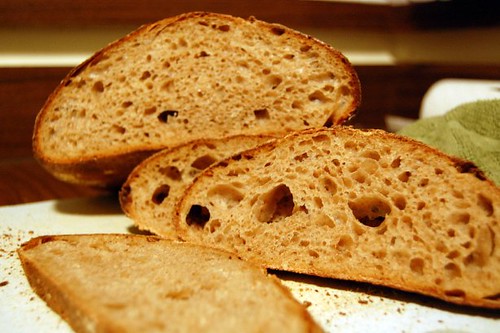

Two different loaves, but both very tasty.


